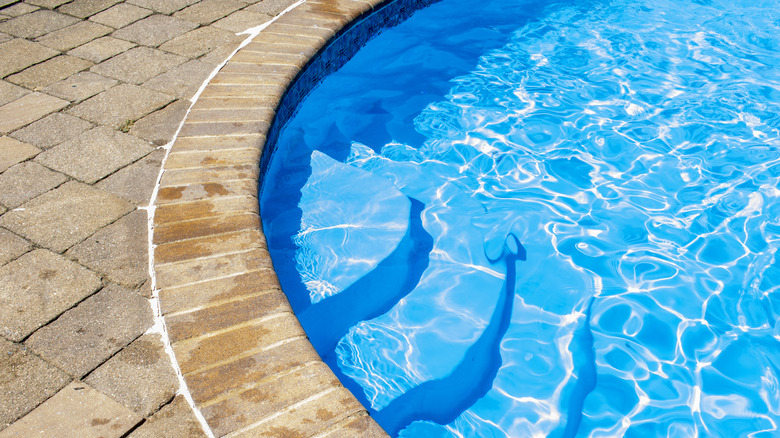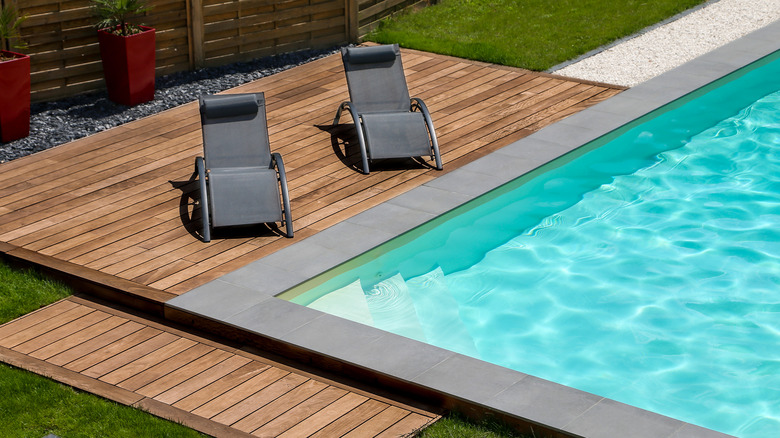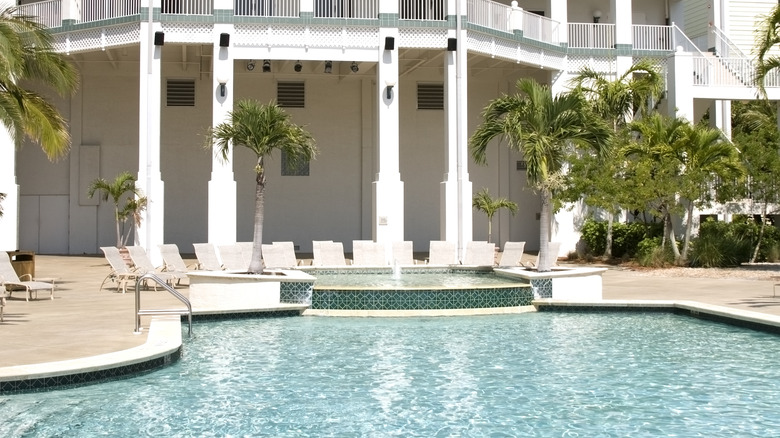What Is Pool Coping And Why Your Pool Needs It
Have you ever climbed into a pool and suffered scratches or uncomfortable scraping on your skin from the edge? That could be because there is no coping. For those designing and installing an inground pool, coping is a critical component of the process. It forms a decorative but functional cap along the exterior edge, creating a comfortable area on the surface for someone to sit or stand on. So the question is, why does this structure matter in your pool's design and functionality?
When designing and installing a pool made of concrete, coping can be used to make sliding into the water easier while also serving as a protective barrier for the structure's integrity. It does this by reducing the amount of water that flows behind the shell, limiting concrete erosion and breakdown, and extending the inground pool's lifespan. Of course, with so many options in styles and types of inground pools available, you can also use coping to add a bit of a decorative feature, helping your backyard stand out from others, perhaps even with mosaic tiles or a different color that contrasts the surrounding surfaces.
The benefits of pool coping are hard to miss
Pool coping comes in various material options, such as natural stone, brick, and concrete. All offer a few key benefits, like creating a non-slip barrier around your pool and reducing the risk of injury. Also, it creates a safe and secure platform where people can easily get in and out of the water. It's also used as a simple way to cover up less-than-attractive features of the pool, like the mechanics of your filtration system or automatic pool cover.
Coping allows for customizable design features to the pool's edge, thanks to the numerous styles available. For example, choosing a natural stone color or pattern can create a dramatic design. You can also select from various edge types, such as squared edge, single bullnose, or rebated square edge, depending on the specific style you prefer. This, along with various finishes, colors, and even mosaic patterns, can help set off the look of your pool.
Which materials are best for pool coping?
Now that you know what pool coping is, you can start considering the wide range of materials available that complement different pool designs. You can choose bricks, pavers, composite, or natural stone slabs. Brick tends to be an affordable, easy-to-access option, though concrete pavers are a sturdy, low-maintenance alternative. Natural stone, like granite or flagstone, is an excellent choice for durability but tends to cost more than concrete and brick.
When making the decision, consider affordability. The average cost of brick coping ranges from $25 to $30 per linear foot. However, choosing a travertine or natural stone coping for your pool will cost around $45 to $55 per linear foot. Another option is cantilevered concrete coping, which is much more affordable at about $6 to $10 per linear foot. Prices will differ based on the contractor, location, and overall availability of the product. Choosing something that fits your needs and goals from a budget standpoint but also one that's going to be easy to maintain long-term is just one of many aspects of finding a material best suited for your pool.


